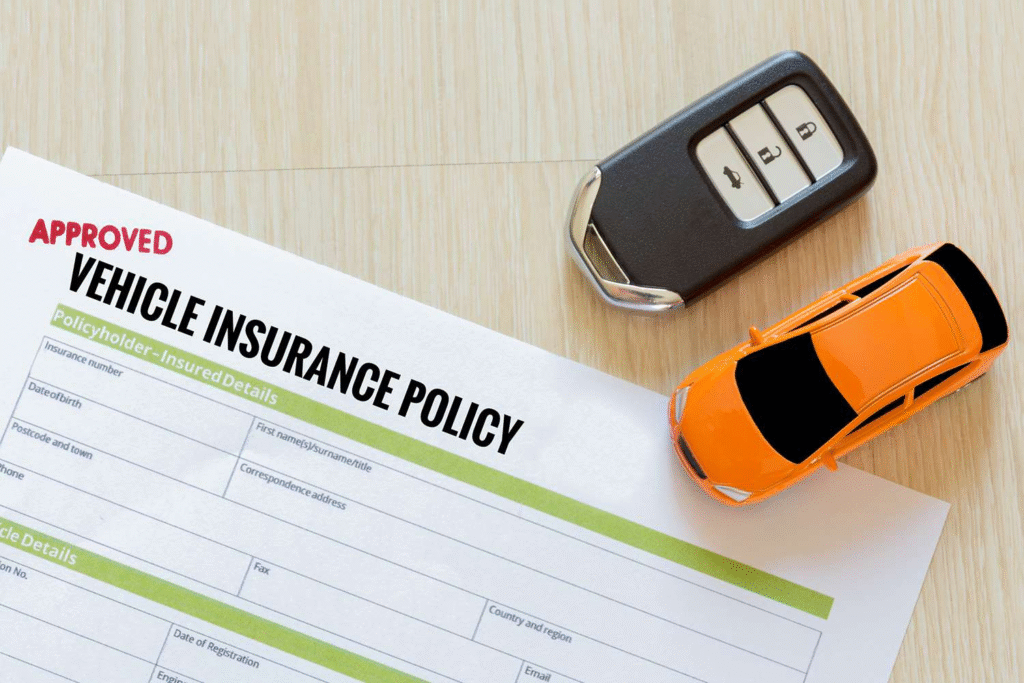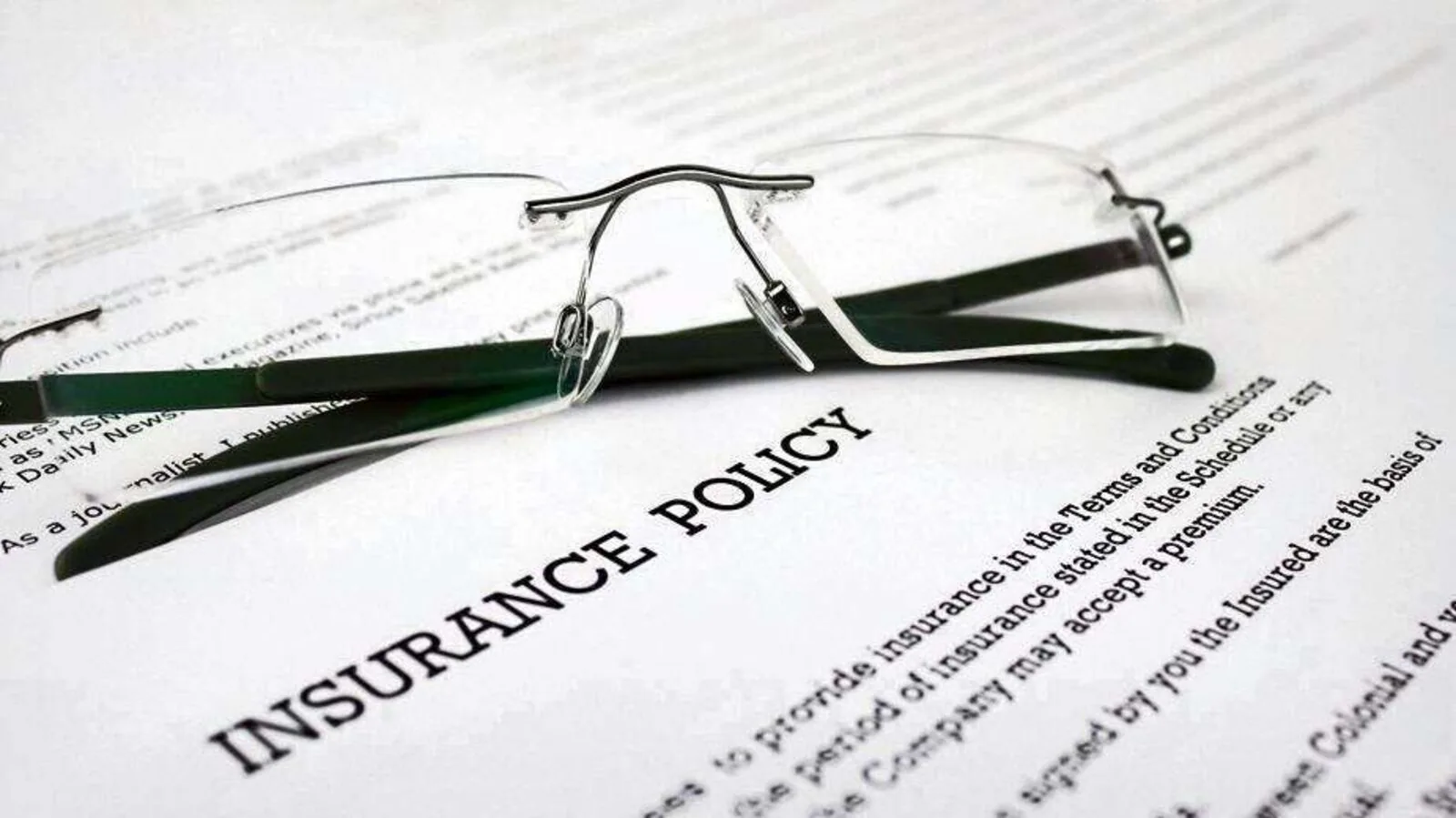Car insurance is an essential aspect of responsible vehicle ownership. It not only protects you financially in case of accidents but also gives you peace of mind while on the road. But with so many insurance providers available in the market, each offering a variety of plans, how do you determine which car insurance provider offers the best coverage?
In this article, we’ll break down everything you need to know to make an informed decision, including what to look for in a car insurance policy, reviews of leading providers, common coverage types, and how to find the best deal for your needs.
Key Takeaways
- The best car insurance coverage offers a balance of protection, price, and customer service.
- Understand different coverage types and pick those that fit your risk level and vehicle value.
- Shop around and get multiple quotes to ensure you’re getting competitive rates.
- Consider the insurer’s reputation for claims service and financial stability.
- Utilize discounts and add-ons to maximize value without overspending.
- Don’t just pick the cheapest policy—ensure your coverage meets your needs.
- Regularly review and update your policy as your situation changes.
Understanding Car Insurance Coverage: What Does “Best” Mean?

When we talk about the “best coverage,” it’s important to recognize that “best” can vary from person to person depending on:
- Your budget
- The level of protection you want
- Your driving habits
- The state you live in (due to varying insurance laws)
- Additional benefits like roadside assistance or rental car coverage
Generally, the best coverage means a policy that balances affordable premiums with comprehensive protection — minimizing your out-of-pocket expenses and maximizing your benefits in case of an accident or theft.
Key Types of Car Insurance Coverage
Before diving into providers, understanding the different types of coverage is vital:
1. Liability Coverage
This is usually mandatory. It covers damages to other people or property if you are at fault in an accident.
2. Collision Coverage
Pays for repairs to your own vehicle after an accident, regardless of who is at fault.
3. Comprehensive Coverage
Covers damage to your vehicle from non-collision events like theft, vandalism, fire, or natural disasters.
4. Personal Injury Protection (PIP) or Medical Payments
Covers medical expenses for you and passengers after an accident.
5. Uninsured/Underinsured Motorist Coverage
Protects you if you’re hit by a driver with little or no insurance.
6. Additional Coverages
Rental car reimbursement, roadside assistance, gap insurance, etc.
Top Car Insurance Providers: Overview & Coverage Highlights
Here’s a closer look at some of the top insurance companies known for offering excellent coverage in 2025:
1. State Farm
- Largest auto insurer in the U.S.
- Excellent customer service and claims handling
- Offers comprehensive policies with add-ons like roadside assistance
- Good discounts (multi-policy, safe driver)
- Strong network of local agents
2. GEICO
- Popular for competitive pricing and user-friendly digital experience
- Good for drivers looking for affordable basic to full coverage
- Quick claims processing via app
- Variety of discounts (military, federal employee, good student)
3. Progressive
- Known for its innovative tools like the Name Your Price® tool
- Offers extensive coverage options including rideshare coverage
- Snapshot® program rewards safe driving
- Good discounts for bundling and continuous coverage
4. Allstate
- Wide coverage options and add-ons
- Strong rewards program for safe drivers
- Local agents available for personalized service
- Offers accident forgiveness
5. USAA
- Exclusive to military members and their families
- Known for superior customer satisfaction and claims service
- Competitive premiums and comprehensive coverage
- Offers great discounts and perks
6. Amica Mutual
- High customer satisfaction ratings
- Dividend policies that can return a portion of premiums
- Flexible coverage options
- Excellent claims service
7. Farmers Insurance
- Broad coverage options including accident forgiveness
- Good for drivers with less-than-perfect records
- Access to local agents
- Variety of discounts available
How to Determine Which Provider Is Best for You
Step 1: Assess Your Needs
Consider your car’s value, your driving record, and how much risk you’re willing to take. Older cars might only need liability and comprehensive, while newer cars may benefit from full coverage.
Step 2: Compare Coverage Options
Make sure the provider offers the specific coverage types and add-ons you want.
Step 3: Get Multiple Quotes
Prices can vary widely. Get quotes from several providers to compare premiums for the same coverage levels.
Step 4: Check Customer Reviews and Ratings
Look for feedback on claims satisfaction, customer service, and ease of communication.
Step 5: Evaluate Discounts
See which discounts you qualify for and how they affect your premium.
Step 6: Review Financial Strength
Make sure the insurer is financially stable to pay claims when needed (check ratings from AM Best, Moody’s).
Factors Influencing Car Insurance Coverage Quality
Choosing the right car insurance policy isn’t just about picking the lowest price. The quality of coverage depends on several critical factors that influence how well the policy protects you, how easy it is to manage, and how effective it is when you need to file a claim. Understanding these factors can help you evaluate insurance providers and policies more effectively.
1. Coverage Options and Limits
The foundation of good car insurance is having the right types of coverage tailored to your needs:
- Types of Coverage Offered: Providers that offer a wide range of coverage options — liability, collision, comprehensive, uninsured motorist, personal injury protection, and extras like rental reimbursement or roadside assistance — allow you to customize your policy.
- Coverage Limits: Higher coverage limits generally mean better protection but come with higher premiums. The best policies balance adequate limits that can cover worst-case scenarios without making premiums unaffordable.
- Flexibility in Coverage: Policies that allow you to adjust limits or add/remove coverage as needed provide more control and can adapt as your circumstances change.
2. Claims Handling and Customer Service
When accidents happen, quick and fair claims processing becomes paramount. The quality of an insurer’s claims service can make or break your experience.
- Speed of Claims Processing: Leading insurers process claims quickly and efficiently, minimizing the time you are without your vehicle.
- Fairness in Settlements: Some insurers may undervalue claims or dispute them unnecessarily, causing frustration and financial stress.
- Accessibility of Support: 24/7 claims support via phone, mobile app, or online portals enhances convenience.
- Customer Service Reputation: High customer satisfaction ratings from independent surveys like J.D. Power or Consumer Reports indicate better overall service quality.
3. Financial Strength and Stability
An insurer’s financial strength is crucial because it indicates their ability to pay out claims even in large-scale disasters or economic downturns.
- Rating Agencies: Agencies like AM Best, Moody’s, and Standard & Poor’s provide financial strength ratings. A rating of A or better typically indicates a financially stable company.
- Impact on Policyholder Confidence: Choosing a financially strong insurer ensures your claims will be paid promptly without delays.
4. Pricing and Premium Affordability
While quality matters, the cost is often the deciding factor for many buyers.
- Competitive Pricing: Insurers that offer reasonable premiums for the coverage they provide are generally more attractive.
- Transparent Pricing: Good insurers clearly explain how premiums are calculated and what factors affect your rates.
- Discounts and Savings Programs: Availability of discounts (safe driving, bundling, low mileage, good student) can significantly reduce premiums without compromising coverage quality.
5. Policy Deductibles
Deductibles are the amount you pay out of pocket before insurance kicks in. The choice of deductible affects both your premium and your financial risk.
- Higher Deductibles Lower Premiums: Selecting a higher deductible reduces your premium but increases what you pay after a claim.
- Lower Deductibles Increase Protection: Lower deductibles offer better protection but come with higher monthly costs.
The best policies give you options to choose a deductible that aligns with your financial comfort and risk tolerance.
6. Additional Perks and Value-Added Services
Top insurers often provide extras that add value to their coverage:
- Roadside Assistance: Services like towing, jump-starts, or lockout assistance provide peace of mind on the road.
- Rental Car Coverage: Reimburses rental expenses while your car is being repaired after a covered accident.
- Accident Forgiveness: Prevents your premiums from increasing after your first accident.
- New Car Replacement: Pays to replace your vehicle with a new one if totaled within a certain period.
These extras enhance the overall quality and usability of your coverage.
7. Technology and User Experience
Modern insurance companies increasingly rely on technology to improve customer experience.
- Mobile Apps: Allow for easy policy management, quick claims filing, and instant ID card access.
- Telematics and Usage-Based Insurance: Programs like Progressive’s Snapshot or State Farm’s Drive Safe & Save reward safe driving with discounts.
- Online Quotes and Policy Management: Streamlined digital processes save time and provide transparency.
The availability and quality of these technological tools contribute to better coverage quality by making insurance more accessible and user-friendly.
8. Geographical and Legal Factors
Insurance coverage quality can also be influenced by where you live:
- State Insurance Regulations: Minimum coverage requirements and coverage options vary by state, affecting available policies and premiums.
- Local Risk Factors: Areas prone to natural disasters, high accident rates, or theft may influence coverage needs and cost.
- Provider’s Local Presence: Insurers with a strong presence or network in your area may offer better customer service and quicker claims handling.
9. Customization and Policy Flexibility
The ability to tailor your policy to your specific situation is a hallmark of quality coverage.
- Flexible Coverage Options: Being able to add or remove riders, adjust limits, or combine policies helps optimize protection.
- Payment Plans: Monthly, quarterly, or annual payment options with no penalty improve affordability and convenience.
- Easy Policy Changes: Good insurers make it simple to update your policy as your life circumstances evolve.
10. Transparency and Policy Clarity
Finally, the clarity of policy terms and transparency of information impact coverage quality.
- Clear Explanation of Terms: Policies should clearly explain what is covered, exclusions, and claim procedures.
- No Hidden Fees or Surprises: Avoid insurers with ambiguous policies or extra fees not clearly disclosed upfront.
- Educational Resources: Good insurers provide resources to help customers understand coverage and insurance basics.
Common Mistakes to Avoid When Choosing Car Insurance

Selecting the right car insurance policy can be a complex process, and many drivers make costly errors along the way. Understanding these common mistakes can help you avoid unnecessary expenses and ensure you get the coverage you need.
1. Choosing the Cheapest Policy Without Reviewing Coverage
One of the most frequent mistakes is choosing a policy based solely on price. While it’s tempting to go for the lowest premium, cheaper policies often come with lower coverage limits, higher deductibles, or fewer benefits. This can leave you underinsured and exposed to large out-of-pocket costs if you’re in an accident.
Tip: Always compare the coverage details and limits along with the premium. Ask yourself if the policy adequately protects your vehicle, liability, and medical expenses.
2. Ignoring State Minimum Requirements
Each state has its own minimum car insurance requirements, typically covering liability for injury and property damage. Some drivers mistakenly buy policies that meet or barely exceed these minimums, not realizing that they may not be enough to cover real-world accident costs.
Tip: Consider purchasing coverage above state minimums, especially if you own a newer or valuable vehicle or want better protection against lawsuits.
3. Not Updating Your Policy After Life Changes
Your insurance needs evolve over time. For example, buying a new car, moving to a different state, adding a teen driver, or improving your credit score can all impact your coverage needs and premiums.
Tip: Regularly review and update your policy whenever you experience significant life changes to avoid being underinsured or overpaying.
4. Overlooking Discounts
Many insurance companies offer a wide range of discounts—such as for safe driving, bundling multiple policies (home + auto), vehicle safety features, low mileage, and good student grades. Failing to ask or check for these discounts can cost you hundreds of dollars annually.
Tip: Always inquire about potential discounts during the quote process and at renewal time.
5. Not Understanding Deductibles
Your deductible is the amount you pay out of pocket before your insurance kicks in. Choosing a very low deductible raises your premium, but a very high deductible could make it hard to afford repairs after an accident.
Tip: Choose a deductible that balances affordable monthly premiums with an amount you could realistically pay if needed.
6. Skipping Uninsured/Underinsured Motorist Coverage
If you’re hit by a driver who has little or no insurance, you could be left with significant expenses. Many drivers skip this coverage to save money, but it’s a critical layer of protection.
Tip: Include uninsured/underinsured motorist coverage to protect yourself from negligent drivers.
7. Not Checking the Insurer’s Financial Strength and Reputation
You want an insurer that will be able to pay claims quickly and fairly. Some drivers focus only on price and don’t research the company’s financial health or customer service reviews.
Tip: Check ratings from agencies like AM Best, J.D. Power, and Consumer Reports for financial stability and customer satisfaction.
8. Assuming Your Auto Insurance Covers Everything
Some drivers mistakenly believe their auto insurance covers everything related to their vehicle, including personal belongings inside the car or rideshare driving.
Tip: Verify what your policy covers and consider additional coverage or a rider for personal property or business use, like Uber or Lyft.
9. Failing to Read the Policy Fine Print
Many policyholders sign up without carefully reading their terms and conditions. This can lead to unpleasant surprises, like exclusions or limits on certain claims.
Tip: Take time to thoroughly read your policy or have an agent explain any confusing terms before purchasing.
10. Not Shopping Around Regularly
Insurance markets change frequently, and what was the best deal last year might not be the best this year. Many drivers stick with the same insurer out of convenience and miss opportunities to save.
Tip: Shop around and get quotes from multiple providers at least every couple of years to ensure you’re getting the best coverage and price.
Conclusion
Choosing the best car insurance provider is a balancing act between coverage quality, affordability, and customer service. While State Farm, GEICO, Progressive, and others are among the top providers, the “best” insurer ultimately depends on your unique needs and circumstances.
Take the time to carefully evaluate your requirements, compare quotes, and check reviews before committing to a policy. Remember, the right coverage can save you thousands of dollars and a lot of stress when the unexpected happens.
Also Read :-How Can You Get Your Loan Approved Quickly and Easily?
FAQs
1. Which car insurance provider is best for new drivers?
Providers like GEICO and Progressive often offer affordable policies with useful tools for new drivers. Discounts for students and safe driving programs help keep costs down.
2. Is it better to choose a local agent or an online-only insurer?
Local agents provide personalized advice and can help you navigate complex claims, while online insurers tend to be cheaper and more convenient for straightforward needs.
3. Can I switch providers mid-policy?
Yes, but check for cancellation fees or refund policies. Compare new coverage carefully before switching.
4. How do discounts work on car insurance?
Discounts vary by provider and can be based on driving history, multi-policy bundles, vehicle safety features, and more. Always ask which discounts you qualify for.
5. What is gap insurance and do I need it?
Gap insurance covers the difference between your car’s value and what you owe on a loan or lease if your car is totaled.
6. Will my premiums go up if I make a claim?
Often, yes. But some insurers offer accident forgiveness programs that prevent premium increases after a first accident.
7. How can I lower my car insurance premiums without sacrificing coverage?
Increase your deductible, bundle policies, maintain a good driving record, and ask about all available discounts.



